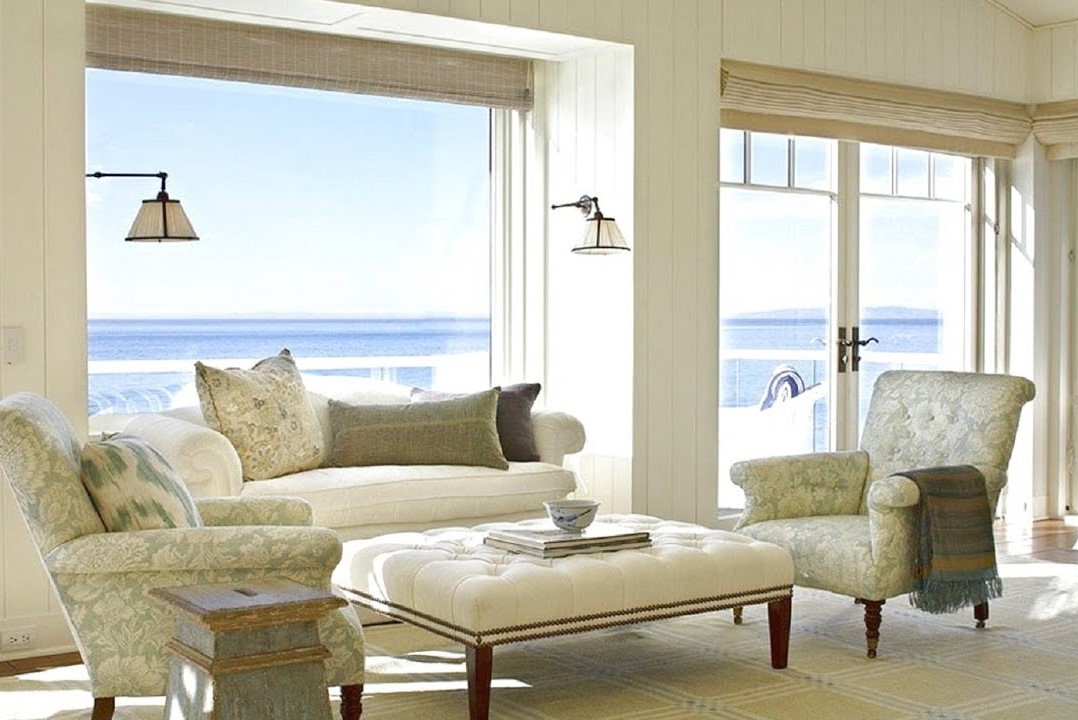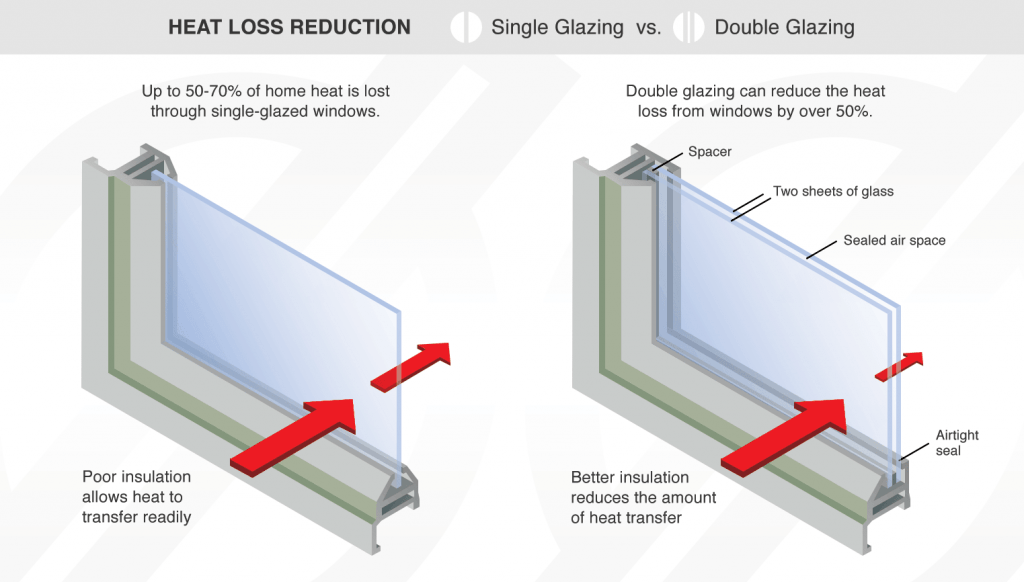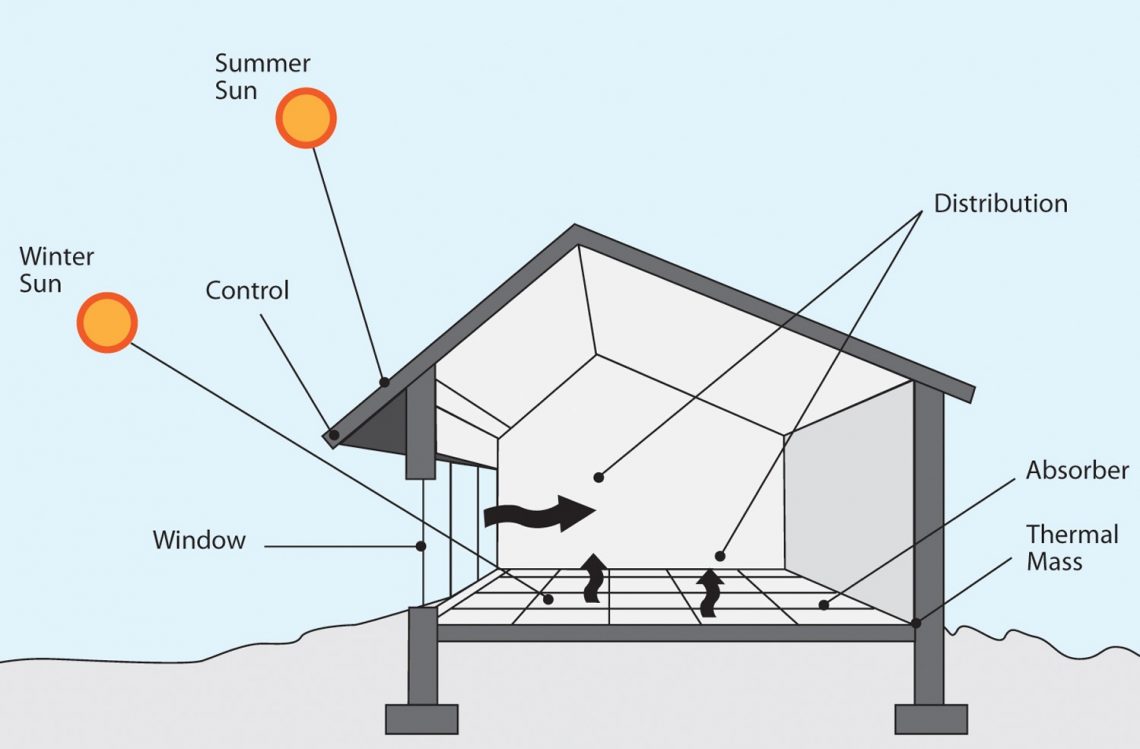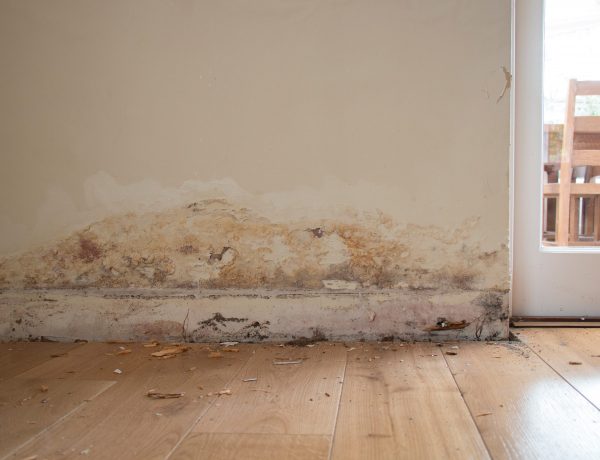There’s a lot of talk about renewable energy these days, and some of the most popular renewable energy topics are about solar power, or to put it another way: harnessing the sun’s energy to create electricity. When it comes to designing a home, however, it doesn’t take half-a-dozen solar panels on the roof for the sun to be effective. We can also use the sun to passively heat our homes and to reduce our energy costs. The best part about a solar passive design? It essentially uses the sun’s energy for free.

So how does a solar passive design, or passive heating as it’s also known, work? Well, simply put, it works by absorbing the right amount of the sun’s heat into your home, and then by managing that heat to remain at a comfortable temperature.
There’s a number of ways to do this and these methods can be broken into two distinct categories: the capturing of the sun’s energy, and the storing of the sun’s energy. For a solar passive design to be effective, it needs to do both.
Capturing the sun’s energy. The design and positioning of a house will determine how much heat it is able to absorb from sunlight. It might sound simple, but this means your house needs to get a quality amount of sunlight each day. If you live on a south-facing hill or in a south-facing apartment or are surrounded by a lot of shade-giving vegetation you may find it exceedingly difficult to passively heat your home. Generally, at least in the southern hemisphere, to take full advantage of the sun we need our homes to utilise a northerly aspect. What does this mean? To absorb the sun’s energy, we need windows to allow sunlight into our home, and this is done most efficiently when our windows face within approximately 30° of true north. To allow in as much sunlight as possible, most of the glazing on a house should ideally face in a northward direction. From a design perspective, that means rooms that tend to be sunlit with big windows, such as living rooms, bedrooms, and kitchens, should be positioned on the northside of the building.

Your other rooms that often have smaller windows you want on the southside, because while all those big windows on the north are bringing heat into your home, the ones on the south are doing the opposite, they’re letting heat out, so the smaller windows on the south the better.
Assuming you’re able to absorb a significant amount of the sun’s warmth into your home, the next step is to keep it there and regulate it. Why do we regulate? Because it is possible to have too much of a good thing. If you overheat your house, you’ll either open a window, which may let out too much heat, meaning you’ll need to heat it again come night time, or you’ll put on an air-conditioner to cool it, and again, need to heat it again come night time – that’s all very energy heavy, and energy heavy means costly.
So, to manage the heat you bring into your house via the sun, you need good insulation in your external walls and your ceiling. Insulation works like this: it contains the heat on cold days, and it prevents too much heat from coming in on hot days. Now we’re going to go back to the glazing, because like insulation, if you put double-glazing into your home, your windows will keep the heat in on the cold days and stop too much from coming in when it’s hot.

While good insulation and double-glazing may cost more during the building phase, the amount saved on electricity bills means these items quickly pay themselves off. Another method for regulating the sun’s heat in your home is to store it, and you can do this simply by having concrete floors or brick walls. How does that work? Have you ever picked up a rock that’s been in the sun and found that it’s hot? It works similar to that. Materials with a high thermal mass will trap heat during the day and then slowly release it as the temperature begins to fall, helping to warm your home.
Overall, it’s important to strike the right balance between absorbing heat into your home and then finding a way to regulate and manage it.




No Comments